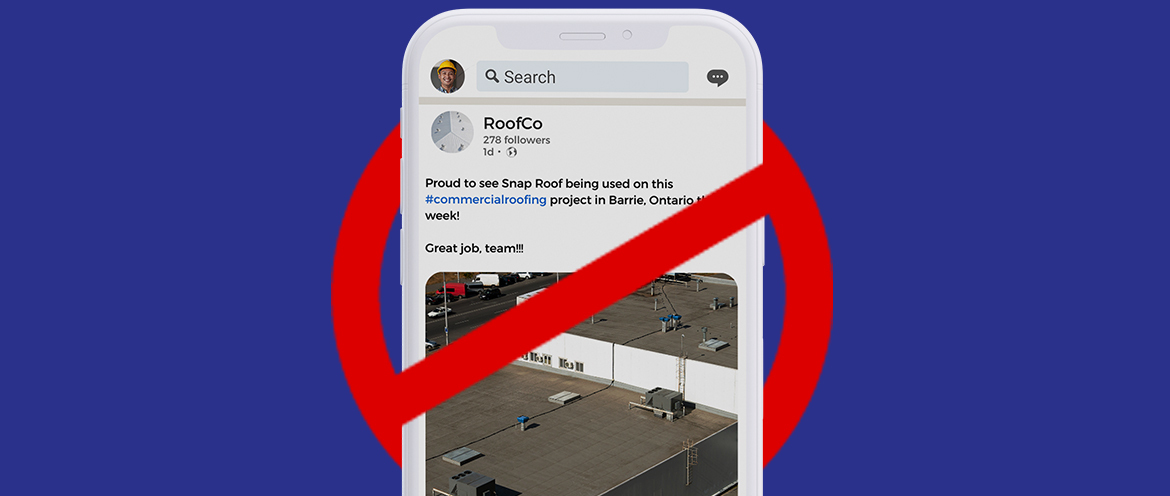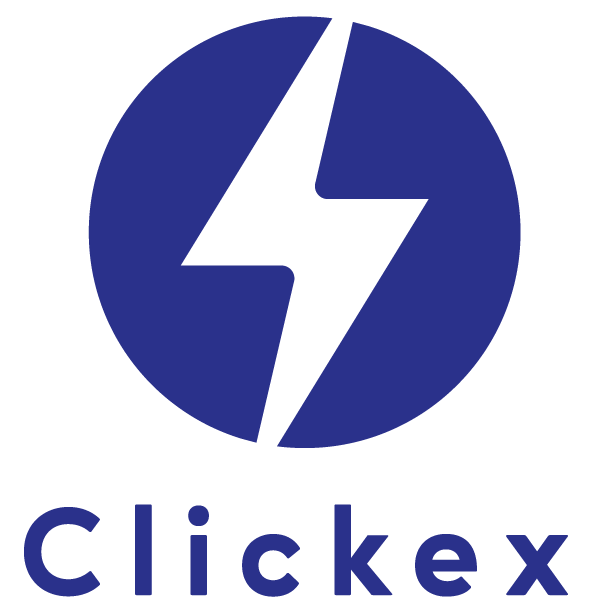If you think brand authority is a “nice–to–have,” but not a top priority for your construction-industry business this year, you’ve been lied to.
Sorry.
In fact, your strategic approach to word–of–mouth and in–person–event strategy for scaling your company is, well: not very strategic at all.
And even businesses buying media, such as billboards, paid digital ads, and even radio air time, are being transactional with their market.
They’re not positioning their businesses for the type of growth that can be unlocked with massive brand authority.
Because the biggest lie told to businesses by the “industry experts” is that you need to set a marketing budget, and spend it on clearly established marketing channels with as much attribution data as possible to present to the executive team each month.
Truth is, if you want to see unprecedented growth and market uptake for your product or service, your business must be an industry leader.
A thought leader, a content marketing leader, and the first frame of reference when your ideal buyers are looking for a solution.
But more than anything, don’t think you can put off or ignore building brand authority for your business until later.
“Later” will be too late.

A story of mediocre growth
Let’s take the example of a hypothetical building material manufacturer, RoofCo.
RoofCo’s product, Snap Roof, is cutting-edge.
Projects using Snap Roof commercial roofing systems are able to cut building material costs by more than 15%, and the product comes with a 60-year warranty.
It’s unbelievably durable.
In short, it’s a complete game-changer for commercial flat roofing that should have every architect, engineer, and contractor across the continent tripping over each other to secure material for their projects.
But sales are only slated to grow 12% this coming year.
Why?
Because the product (and the team behind it) is almost totally unknown in the market, and their share-of-voice is washed out by companies with 10x their marketing budget and sales team size.
Every quarter, RoofCo’s sales team is pushing back, asking where the leads are, and the executive team is looking at middling growth in existing markets.
So, what’s going on?
Why isn’t this cutting edge product making waves and changing the face of commercial building in North America?
When brand authority isn’t a focus
Their marketing manager, Matt, allocates their budget across trade shows, trade publications, Google Ads, and a sprinkle here–and–there of some LinkedIn Ads.
That’s what he learned to do in school, and in his previous marketing positions.
However, at face value, their product offering (and maybe even their brand promise) can be compared with their competitors’ offerings and judged based on features, benefits, and price.
Sure, the durability is there, and the cost reduction is significant, but is it compelling enough to take a risk and change how things are done?
Is RoofCo really all they say they are when it comes to roofing systems?
The truth is, they have a great product, and they’re doing all the “right things” to market themselves, but the brand authority just isn’t there.
Short of a miracle, Matt isn’t going to shift a market of architects, designers, and builders to change what they’ve always done for builds.
The stakes are too high.

Understanding brand authority
Building brand authority in your industry doesn’t mean you need to make your business a household name.
Why?
Because your typical household is not your ideal customer.
You need your industry to recognize and respect your business as an expert in your field (with your ideal client base).
The 3 determinants of brand authority:
High brand awareness (see our article here on measuring brand awareness)
High brand recall (learn about driving brand recall in the construction space here)
High brand reputation (does the market believe you can do what you say you will do, and do they respect your business?)
By hitting all three marks, you start to build significant brand authority in the market.
Your ideal clients look to your business for solutions, and you should start seeing an increase in inbound traffic.
The market not only knows about your brand, and recalls it when they are looking for a solution, but believes in your business, and trusts your claims.
What does brand authority look like?
When Matt looks at RoofCo’s Google Analytics to check their SEO performance, he sees that the top search on Google that brings them traffic is “RoofCo.”
They get about 120 visitors each month from people looking for RoofCo specifically (which is called “branded” search traffic, for the record).
Nice.
But, what Matt doesn’t know is that their biggest competitor, Acme Roof, is getting about 9,000 searches per month for their brand.
And those site visitors?
They have a high conversion rate for sales calls and quote requests.
Acme Roof, and their competing product, is getting more inbound phone calls in a month for quotes than RoofCo gets in 6+ years.
Ouch.
But, Acme Roof didn’t start out this way.
They built a brand that the industry trusts over the course of three decades, and their products are found across North America on commercial buildings in basically every market.
What can RoofCo do to start taking market share?
How to start building brand authority in a crowded market
Building brand authority, especially in a crowded space like building materials, is an uphill battle, and it doesn’t happen off the back of any single initiative.
It’s the result of constantly delivering insight and value to your market of ideal clients, or your potential customers.
It’s also the result of delivering on what you say your business will do.
One of the problems businesses like RoofCo face is that while their product is amazing, they’re not really great at communicating it to their market of Ideal Client Profiles (ICP) via social media or other channels.

Do you see the problem with this type of social media post?
Unfortunately, it’s a waste of your audience’s attention.
It says nothing new.
It imparts zero value to your reader.
In a nutshell: it’s fluff.
But, this is the type of social media content RoofCo (and many real-life businesses) post all the time to try and build brand awareness, and engage with their market.
They think that by posting their brand name and an image, their ICPs will remember them, and think of them for upcoming projects.
Unfortunately, that’s not how it works.
If your company is publishing social media content such as this, you should really start considering what goes into authoritative content—the type of valuable content that will actually build your brand authority and your reputation in the market.
Example of content marketing for brand authority
To start with, think in terms of a content campaign, and not a single piece of content.
And remember, the content must be valuable content.
No fluff.
Because brand authority is more than just brand recognition.
Just throwing your name out there over–and–over, isn’t going to drive the results you’re looking for.
It’s about delivering value, sparking thoughtful dialogues, and driving home the fact that your business is a respected leader in your field.
So how do you do that?
A brand authority building campaign will have multiple parts:
A concise thesis, or argument, that is what you are trying to communicate to your audience and your potential customers
Pillar written or video content, which supports the argument, and will be the basis of the rest of the campaign
Supporting written or video content, which will speak to the pillar content
Voice of Customer (VoC) content, which is your ICP actually speaking to the argument you are trying to make
Follow-up content to communicate secondary points about your argument
Calls to action for your audience to engage or contact your business
It’s important to view every social post you make, every piece of content you write, and every podcast you appear on, as an opportunity to solidify or speak to your audience through a specific lens.
There are no “throw–a–way” posts if your aim is to build brand authority.
Every move is calculated, and every bit of content is connected.

Benefits of content marketing
Now, content marketing is the strategy we recommend because:
Content is free (or at least cheap) to make
It takes more time and patience than money, which is enticing when every paid Google Ad click is upwards of $5-10.Content is scalable
Every time you make a piece of written, video, or audio content, and put it out into the world, you have created something you can expand upon and deliver to other channels.Content builds trust
Delivering high quality work is fantastic for your client’s immediate network to see, but if you build high-quality content that speaks to how or why you did what you did, you can earn the trust of your target audience at scale.
There are very few things you can do to amplify your work and point of view faster and cheaper than creating content for the internet.
Full-stop.
Storytelling for brand connection
Now Matt at RoofCo has decided the brand is lacking brand authority.
He wants to develop a brand–authority–building strategy that is going to put RoofCo and their product, Snap Roof, on the map.
Their brand authority is going to amplify their presence at every event they go to, and on every social media post they write.
But, the question that remains is how will he do this?
For a building materials manufacturer such as RoofCo, it seems there’s no true road to building brand awareness, let alone brand authority, except through brute-force sales tactics.
Except, there’s a story there.
The reason RoofCo started, and how Snap Roof came to be.
It wasn’t some fluke that they had a potentially market-disrupting technology on their hands with Snap Roof.
It was the result of decades of roof material manufacturing experience, of hearing feedback and testimonials from contractors and engineers.
It was a fortuitous collision of the manufacturing know-how and sales get–er–done–ness of the two owners.
There was the thread of a great story in front of Matt, but now he had to figure out how to develop it into a realistic content strategy that would define and drive the RoofCo brand this coming year.
Storytelling is a powerful tool
Instead of trying to appease search engines with Search Engine Optimization (SEO) strategies (which is still a great tactic, by the way), or spending money on keyword bids in the Google Ads ecosystem, storytelling appeals to the emotions of your audience.
Everybody wants to believe in a great story.
Fact is, all we really want to do is read a story that moves us out of the real world into one of fantasy and fiction.
The idea that an underdog can live a real-life “David and Goliath” story, or that a small move can have a butterfly effect and change the world, is always enticing to readers.
It’s the reason some of the top movies to have come out of Hollywood are in fact based on classic literature.
Humans of every generation resonate with certain story arcs and storytelling strategies.
Defining a story for your brand isn’t just useful from a brand background perspective.
Types of content for brand authority
Just as there are hundreds of types of content Matt can use to deploy RoofCo’s brand authority campaigns next year, there are some standard content formats you should be aware of as you look to build brand authority for your business.
Some common types of content include:
Blogs/articles
Case studies
Ebooks
Videos
Podcasts
Social media posts (text, graphic, animated, and video)
Email newsletters
Infographics, and
Oh so much more
Written content is obviously the easiest to produce from a technical standpoint, but then maybe writing is not your forte, or you don’t have a strong writer on your team.
Perhaps you’re solid in front of a camera, and you’d prefer to deliver video shorts of yourself speaking to your audience.
Great.
The key with any type of content marketing strategy, especially as it pertains to building brand authority, is to be consistent.
Well, that, and to deliver worthy content.
And, once again, remember: zero fluff.
Your next steps for building your brand’s authority
There are no ifs, ands or buts about it.
Matt and RoofCo have their work cut out for them.
Building brand authority doesn’t happen without organizational buy-in, and it certainly doesn’t happen overnight.
But, if your business is in a similar position to RoofCo, and you see how brand authority is the strongest amplifier to everything else you do for marketing and sales, there are ways to start.
Sound digital marketing strategy looks beyond the mechanics of keyword research, SEO strategies, and deploying ad spend in the right channels.
Those are traffic acquisition strategies.
If you’re interested in learning more about how to build an authoritative brand, especially in the construction industry, connect with us for a chat.
We will save you years of spinning your tires and set up your marketing and communications infrastructure to deliver a brand people will care about.
Because without that, your business is leaving money on the table.




